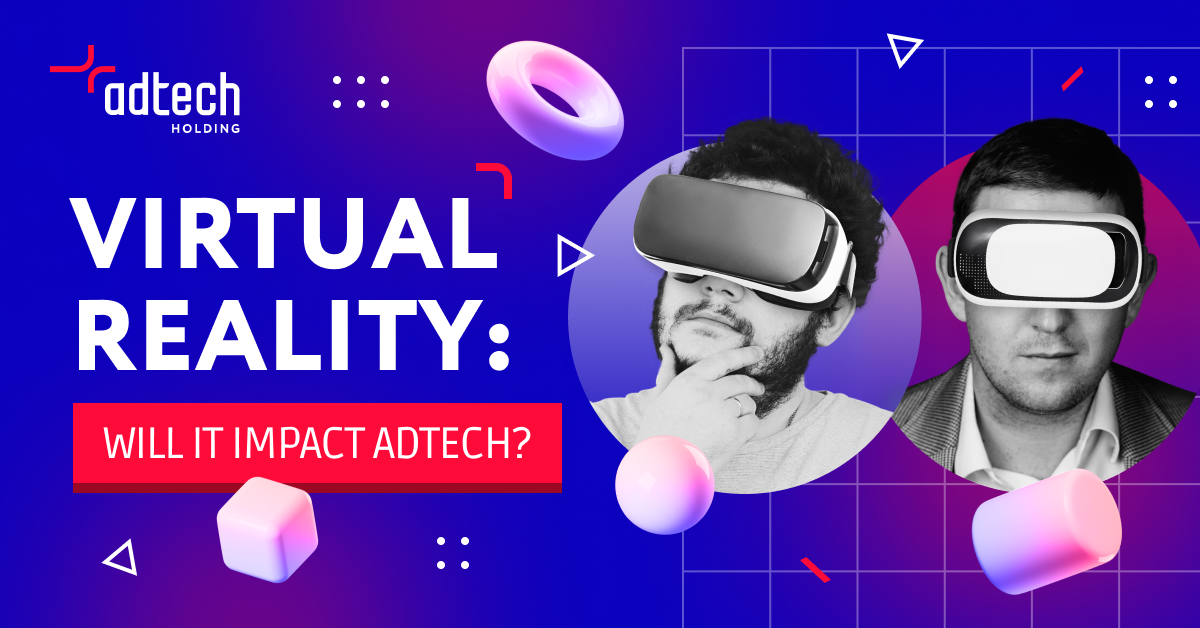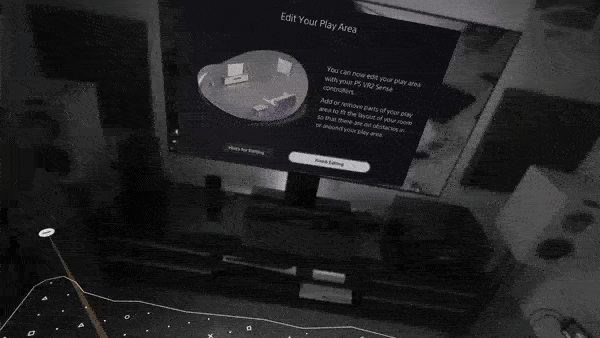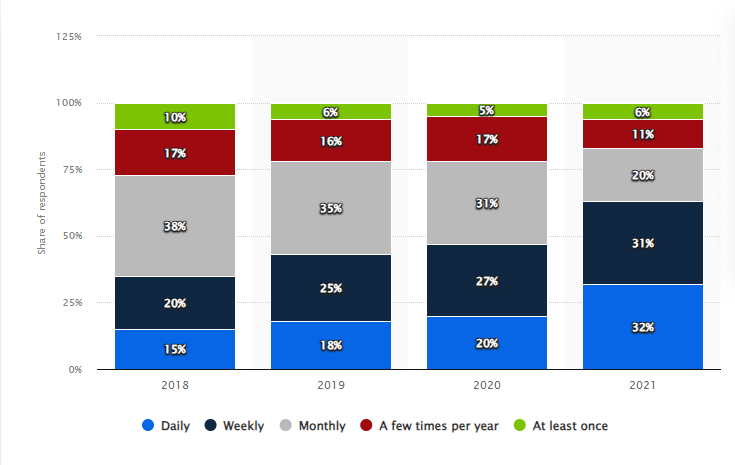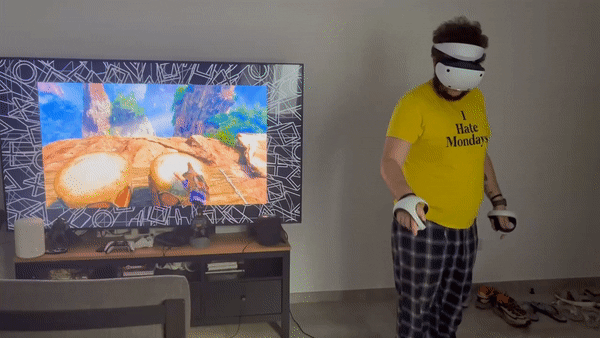Virtual Reality: Will It Change the AdTech Industry?

As a NY Times article said many years ago, Anywhere the Eye Can See, It’s Likely to See an Ad. That article discussed the issue of outdoor advertisements overwhelming almost the whole space in every city. But who could even think back in 2007 to how far it would go — and reach virtual reality?
VR and AR tech seems to be on the edge of the new hype wave since we are expecting the whopping two big releases in 2023 and 2024. While Apple’s new headset Vision Pro is a sensation from a technical standpoint and represents a huge step forward in VR and AR development, the Meta Quest 3 by Oculus might become the next step toward the higher penetration of VR technologies in everyday life as the provider of affordable and still quality headsets.
Although only about 2.11% of the earth’s population is estimated to have VR headsets, the figure is forecasted to increase. For example, the ad spending in the VR advertising segment might raise between €3.5 million in Europe and $4 million in the USA.
Overall, the VR ad market is a novel niche that doesn’t suffer from banner blindness yet and has a big space for creativity. So what does it have to offer now, what is its possible future — and what are the challenges that brands and advertisers might face when adapting to attracting users in VR?
We asked Peter Garmashov (Head of Business Owners at PropellerAds) and Ilya Pasyuk (Senior Developer at Applabz) — our colleagues and VR enthusiasts — to share their vision and discuss their views on the industry.
Part 1. What Are VR Ads and How Do They Work?
First, let’s look at what we currently have now. VR ads have not become common, but we already have great examples of immersive experiences, like The Jigsaw Virtual Room and The North Face: Climb.
In a nutshell, the uniqueness of such ads is in the technology itself. VR headsets have a standard browsing experience — but some websites can turn into a new virtual space and look completely different than what we are used to seeing on the Internet.

So, the ads have a different look in such space, too.
What are the possible user scenarios of VR ads available right now?
- Scenario 1. VR ad is integrated into an app or a game. A user is located in a virtual environment, and some of their actions like a completed task or some controller movement — trigger an ad.
Example: Volvo Reality is a marketing campaign for the Volvo XC90 model. The campaign in a nutshell is a virtual game where you can drive the new Volvo car and activate some car features using controllers.
- Scenario 2. An ad is implemented as a part of the virtual environment, for example, as a banner on the street.
Example: Roblox, an online game platform and game creation system, allows users to enhance their experience through its VR version. In collaboration with Gucci, Roblox Metaverse added a location called Gucci Garden. This interactive exhibition allowed players to purchase Gucci-inspired skins for their avatars and enjoy bright multimedia elements.
- Scenario 3. During a web-based experience, a user gets a link to a VR video.
Example: Thomas Cook, a travel agency, created a Try Before You Fly campaign, which allowed potential customers to explore top popular tourist destinations in VR.
What is common about all the scenarios?
You probably guessed: all of them are costly experiments from big brands. We mean — they are not simple advertising creatives like banners or interstitials. And this is an obvious challenge — but is it the only one?
Part 2. What Are the Challenges?
Currently, VR ads are rare enough — and are not part of a normal AdTech environment like the traditional, familiar formats. The reasons are clear: VR ads in their only existing format are costly at the moment, so they are mainly a prerogative of large wealthy brands.
For example, according to Unity, the creator of the aforementioned Jigsaw Virtual Room, the estimated cost range for a VR ad is between $50,000 and $250,000, depending on the scope and scale of the project.
Besides, there is a question of penetration: VR ads will only reach those who own headsets and use them on a regular basis. Meanwhile, the statistics for VR headsets usage have shown the following picture:

If a headset is not a basic device used daily and constantly like a smartphone — and, as you see, it is not — it is hard for users to convert on it. In other words, it is possible to advertise only those products that people can use in the same VR environment: games or apps, but not, say, some eCommerce goods where people need to make deposits.
Although most headsets today have an option of saving credit card data, the overall adoption rate is still too small to expect people to make some regular offline or digital purchases in virtual reality.
Peter: It doesn’t seem we will adopt some new revolutionary formats of VR ads. One of the biggest challenges is that VR advertising currently lacks targeting particular users and their contexts. Where is the user? Outside or home? In the bedroom or the bathroom? It would be perfect to have the whole flat pinned with QR codes that could give some context hint to a device — but this sounds ridiculous, of course. Still, it would be nice to understand at least the atmosphere: what’s around? Street? Walls? If such targeting becomes available, there might be a breakthrough in the VR advertising niche.
Overall, this doesn’t sound much unrealistic. For example, Meta collects headset and controller movement data for a more immersive experience — potentially, this could also be used for advertising. However, this poses another ethical challenge — isn’t this too large an intrusion into a user’s privacy?

Peter: Provided Apple’s treatment towards privacy, there is a big question that at least Apple Vision will allow collecting such information for ads.
Ilya: Yes, speaking about Apple Vision — the expected game changer in the whole VR industry — much depends on how interesting and exciting the product Apple will manage to create. And yes, targeting with the use of some gestures, poses, or controller movements sounds interesting — but this can only be done if Apple considers this information non-sensitive enough to share with ad API providers.
Part 3. So, The Future
Although the considerable big potential of VR ads is not yet unleashed globally, if, as Ray Kurzweil predicts it, everyone wears headsets soon, and there must be some breakthrough.
What are the possible options that can become the norm for users, publishers, and advertisers? We asked our colleagues to unleash their fantasies.
Peter: There are few websites now that are fully adapted for VR. But we already have some hints for how websites will look: a set of widgets scattered around a user in some virtual space. This might give plenty of ideas for new ad formats or adapting the existing ones for the new tech.
I also had one crazy thought — it sounds ridiculous for today, but why not? Everything is generated right now — AI is on the top of the hype. So there is a possibility that we will soon be able to create our own avatars — to replace us at meetings, for example. And why can’t these avatars become the new publishers? Like I’m on a Zoom call discussing the plans for the next week, and suddenly say – ‘purchase the new BMW’. If the headsets are so widely spread in the future, we can all become influencers!
Ilya: Obviously, Apple is preparing something inspiring. However, Apple products have never been flawless from the first attempt. For example, remember the iPhone story? Only the fourth version has become a truly innovative and unbeatable smartphone and created a big hype around Apple phones. So, maybe we’ll need to wait for the next generations of headsets, too.
The main problem here is that the user market is still very limited. Yes, the headset will probably be used for educational purposes — say, students will be able to learn anatomy in VR, with the most vivid examples ever. But overall, it’s now for geeks, Apple enthusiasts, and gamers — not the best-targeting audience, let’s be honest, for most standard affiliate offers.
But, if we unleash some fantasy — why not imagine VR catalogs — like you can buy online products and literally hold and spin them in your hands in virtual reality?
To Sum Up
VR advertising seems a very interesting topic technology-wise. However, it puts a range of adoption questions and implies much learning. This will include new content creation methods, novel monetization methods — and probably unexpected targeting options.
While all of this seems complicated, but not impossible, the biggest challenge is different.
As Peter put it, ‘The whole problem is that a headset implies you always have two screens behind your eyes. It’s hard to imagine you will live like this all the time — even now, some people complain about strange, sick feelings after entering a VR environment for a while.’
Ilya agrees that we will unlikely see familiar ad formats in virtual reality — at least until the headsets become small eye lenses. But, as he noted, ‘the headsets overall were considered fantastic just about 15 years ago — and what do we have now?’
To sum up, the AdTech VR industry highly depends on the technology itself. If the dream of all VR enthusiasts comes true, and we wear invisible VR lenses instead of headsets — that is when the real revolution will probably begin.




